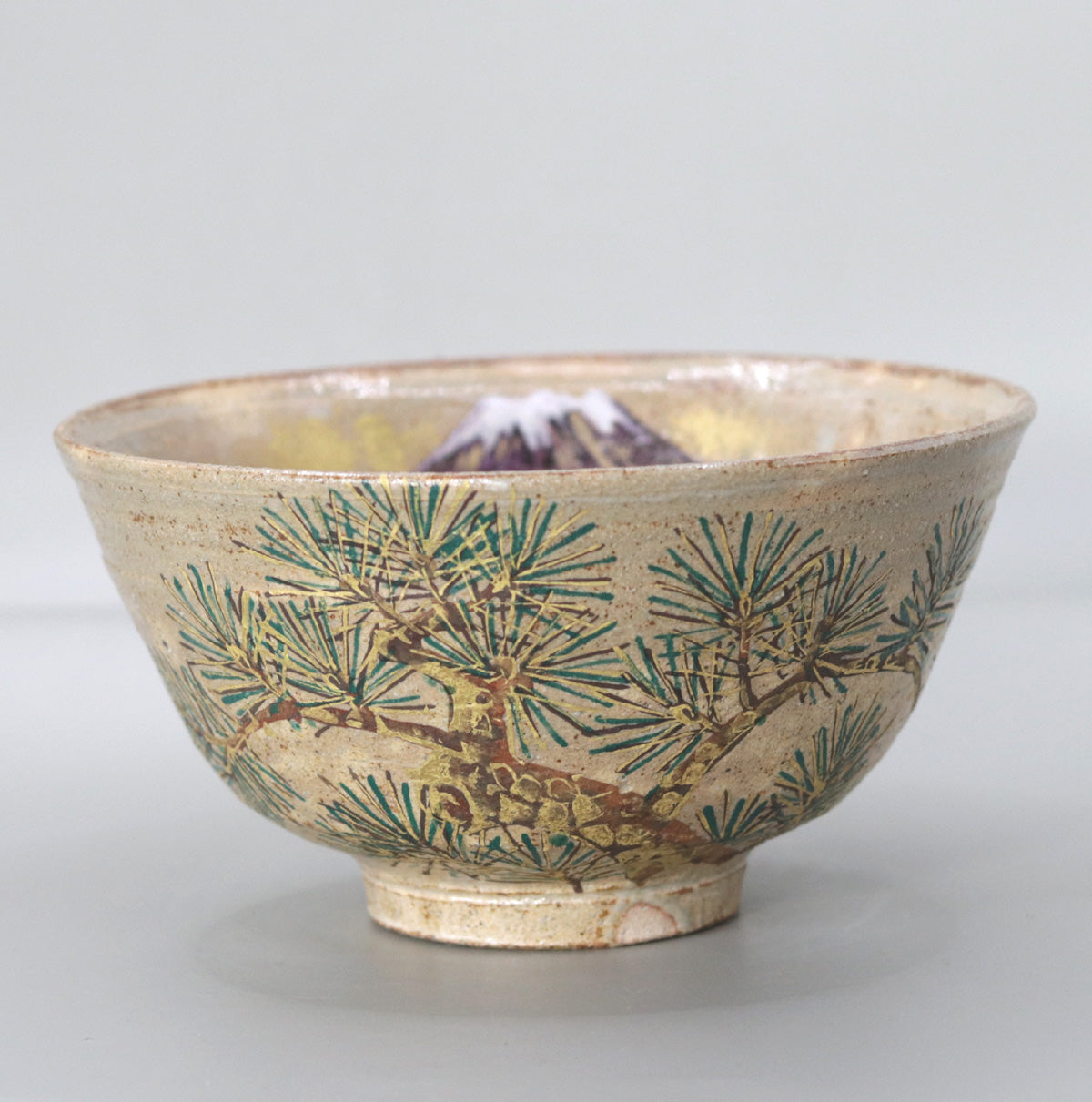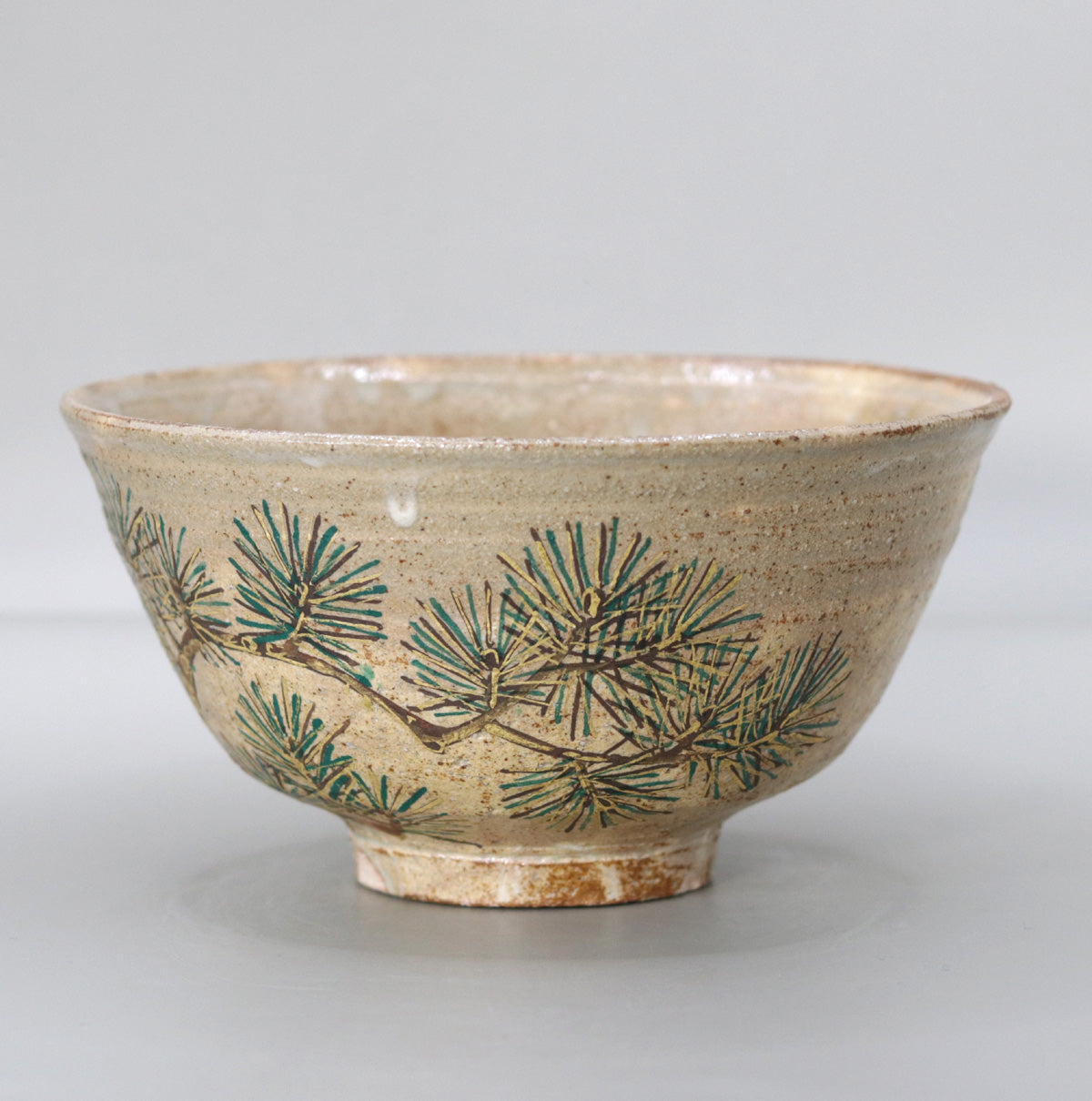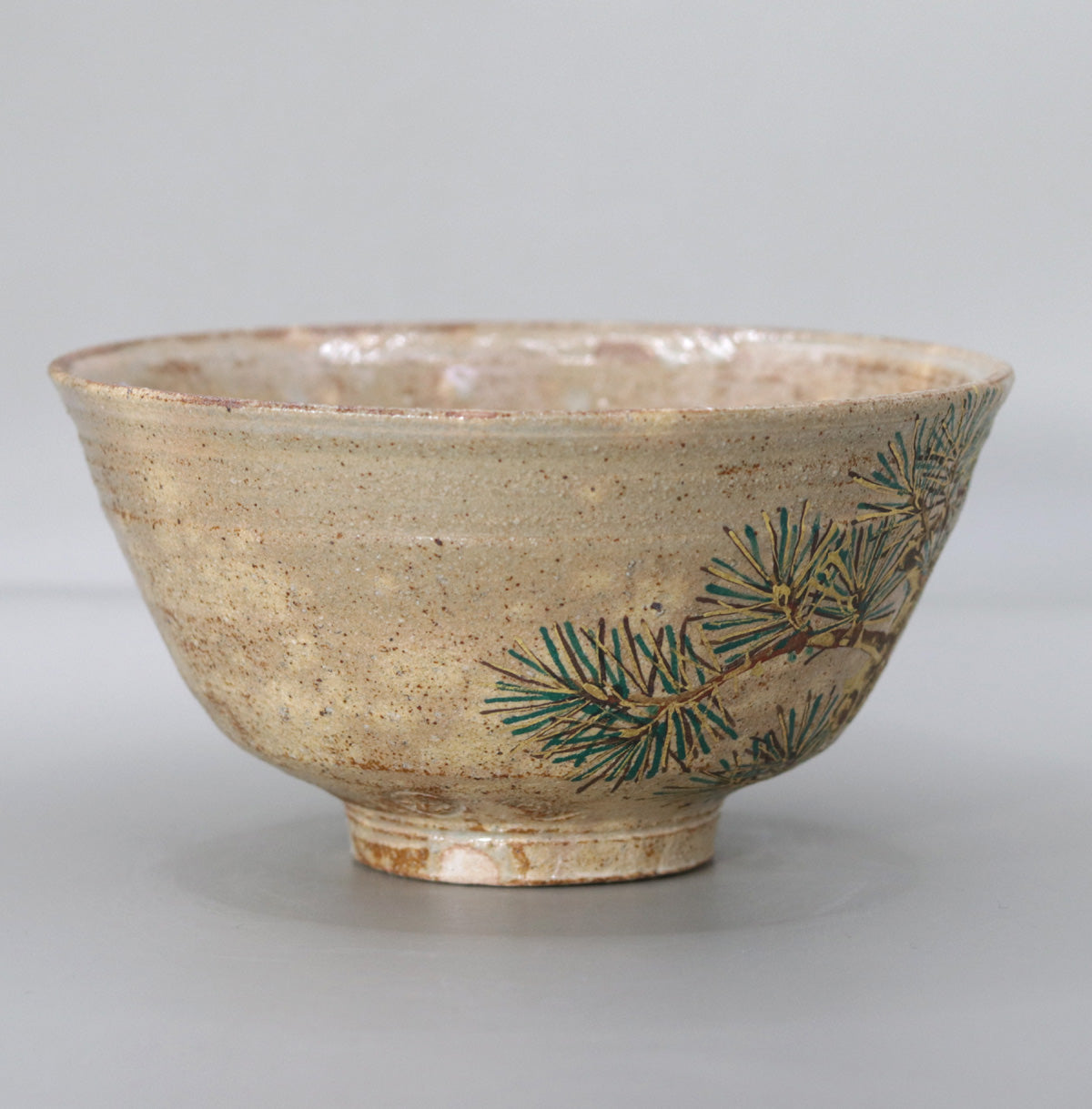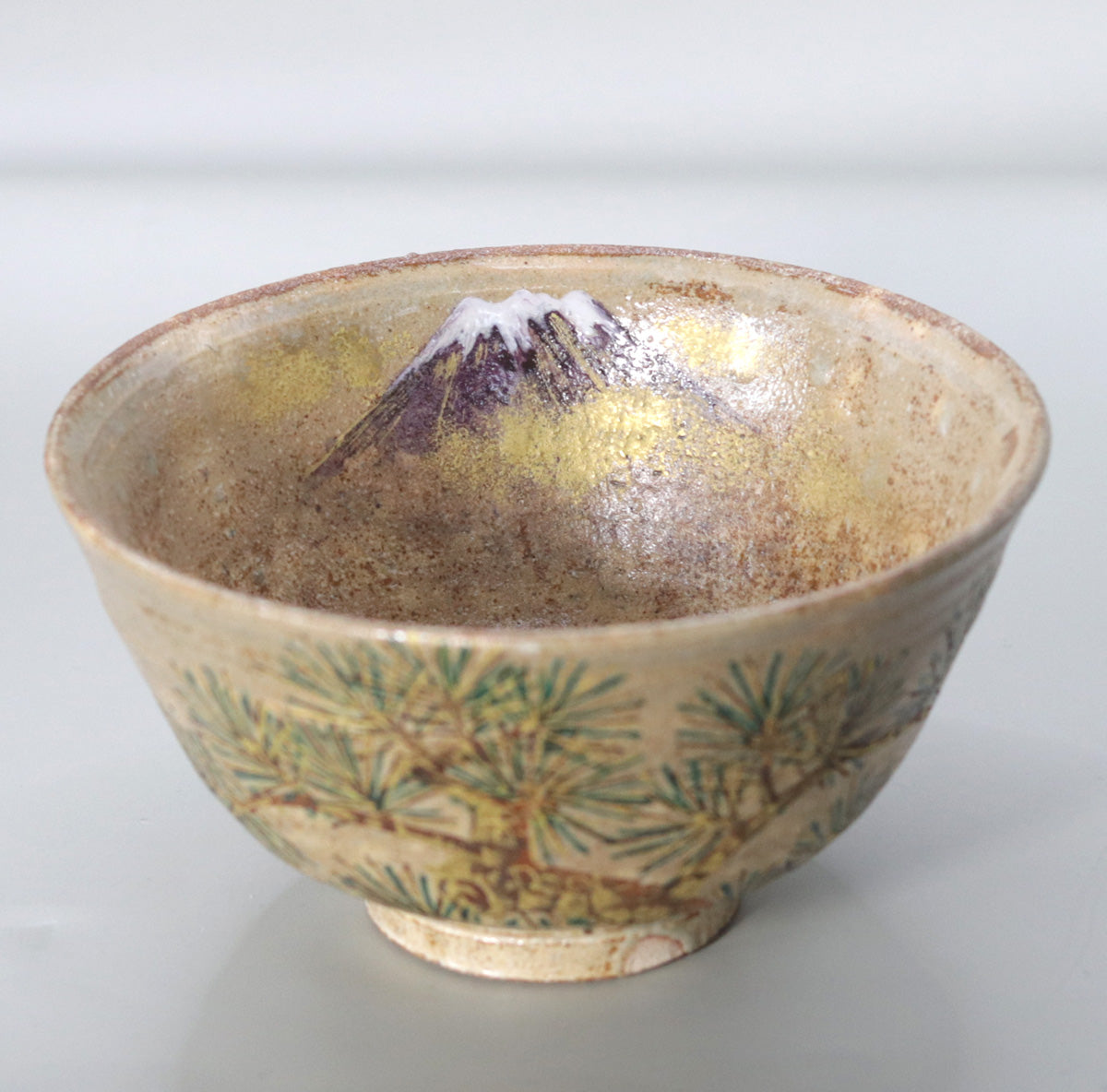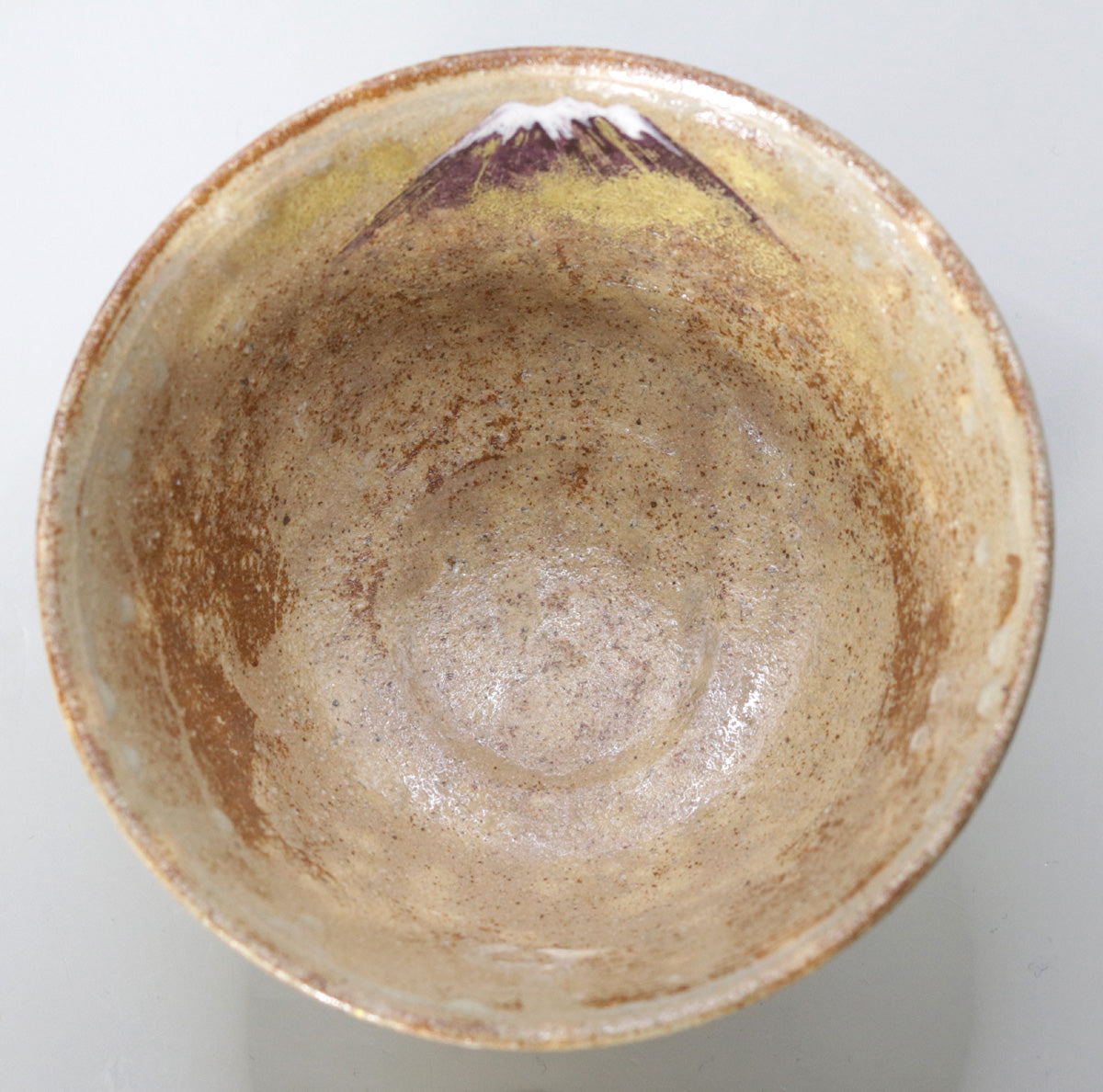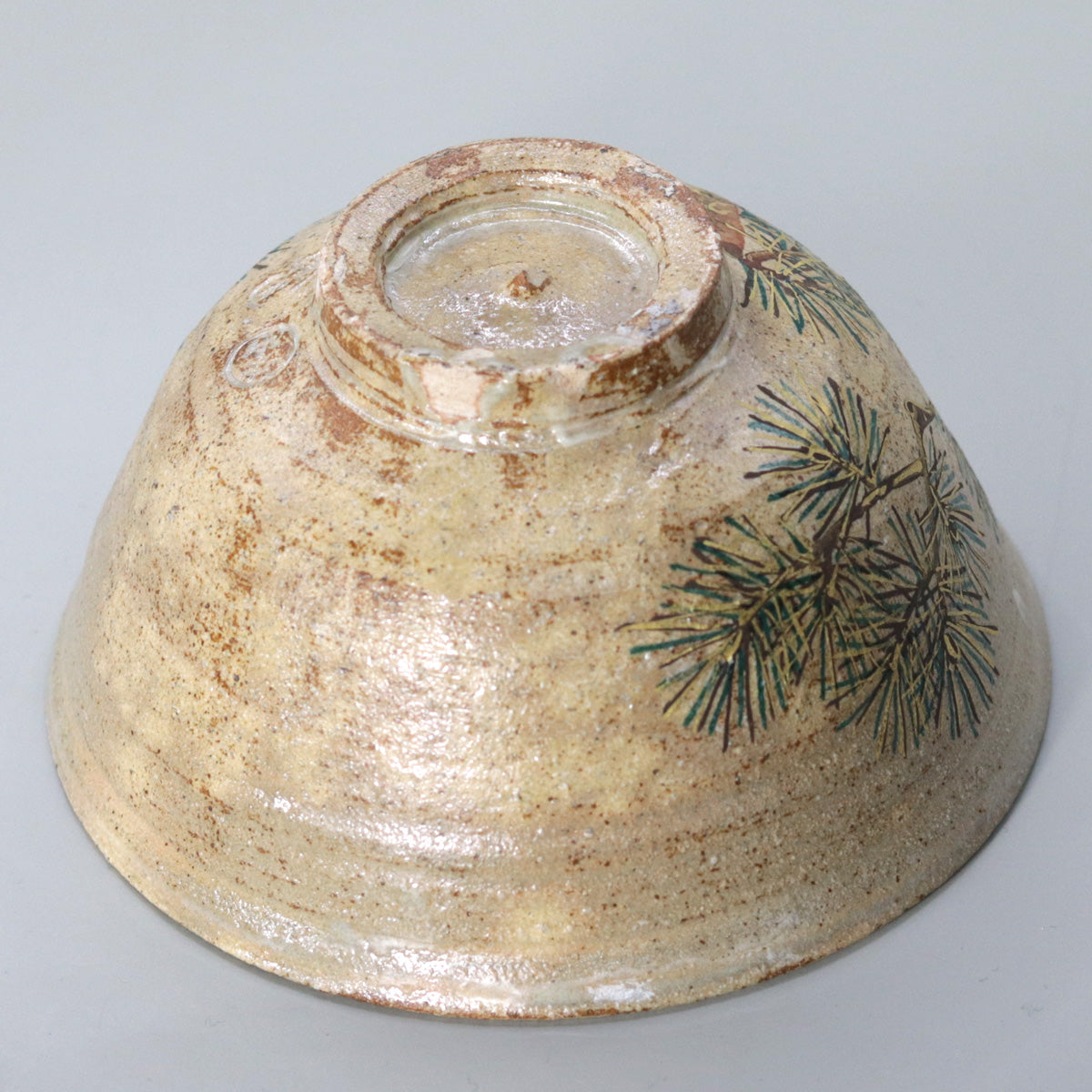Mt. Fuji and Pine Tea Bowl by Rakusai Onishi
Mt. Fuji and Pine Tea Bowl by Rakusai Onishi
Couldn't load pickup availability
Width: 14.3cm Height: 7.5cm
This work by Onishi Rakusai features two symbols of the Japanese mental landscape: Mt. Fuji and a pine tree. It is an outstanding piece of work that speaks of both auspiciousness and scenic beauty in one bowl. Making use of the simple texture of the rough clay, the work is skillfully painted with gold and verdigris to create a unique worldview where wabi and miyabi resonate with each other. Below, we will explain the appeal of this piece from five different perspectives.
1. Shape and clay
Neat bowl shape <br data-start="218" data-end="221">The body is slightly bulging and tapers gently towards the rim, creating ideal proportions that allow the whisk to rotate naturally and create an even foam.
Rough Earth Scenery <br data-start="296" data-end="299">The clay body, which is high in iron, is fired under a slightly reducing condition, creating fine speckles and charring, giving the entire piece a rustic feel reminiscent of mountain surfaces and pine bark.
The inside is printed with pale gold mica gold leaf, forming a stage where the snow-capped Mount Fuji is illuminated by the dawn light in the background. When the green of the matcha is added, the purple of Mount Fuji shines through the gold haze, completing a breathtaking landscape.
2. Design - Mt. Fuji and pine tree auspicious symbols
Pine Trees <br data-start="497" data-end="500">Pine trees are lined up across the entire exterior, their trunks boldly painted in red clay and gold paint, and their leaves expressed in three dimensions with verdigris and green glaze. As an evergreen tree, the pine is a symbol of "longevity and immutability," and brings permanence and tranquility to the tea ceremony.
Distant View of Mt. Fuji <br data-start="601" data-end="604">The purplish snow-capped Mt. Fuji is depicted at the back of the bowl, creating a sense of "manifestation" as the view opens up the moment you finish drinking from the bowl. The pine trees on the outside are the foreground and Mt. Fuji on the inside is the background, creating a sense of perspective depth within the bowl.
Golden Dawn <br data-start="711" data-end="714">The gold paint on the inside suggests the rising sun, while the pointillist gold on the outside suggests the sunlight filtering through the pine trees, skillfully distributing the light of stillness and movement.
3. Techniques: Underglaze and overglaze painting
Scraping and Coloring <br data-start="813" data-end="816">A thin layer of white paint is applied to the rough clay, and then the pine branches are scraped off using a line engraving technique. Red clay paint is then applied into the grooves, which makes the unevenness of the trunk stand out realistically.
Verdigris Laying <br data-start="893" data-end="896">The pine needles are thickly coated with verdigris and then re-fired to give them a glossy, transparent appearance. Gold paint is inserted into the leaf veins, giving them a fresh yet elegant appearance.
Brushing on Mica Gold <br data-start="971" data-end="974">The gold leaf on the inside is applied thinly with a brush in a dawn-like pattern, creating a soft, shimmering effect depending on the light source.
4. Functional beauty at the tea ceremony
Matcha Shines <br data-start="1059" data-end="1062">The gold leaf on the interior walls softly reflects the green of the matcha, and combined with the purple of Mount Fuji, creates the image of a sunrise on the tea surface.
The Pleasure of Storytelling <br data-start="1125" data-end="1128">The host can enjoy a conversation with his guests wishing them longevity and prosperity, adding historical stories such as "Pines live for a thousand years, and Mount Fuji lives for ten thousand years."
Versatility for all seasons <br data-start="1193" data-end="1196">Pine trees and Fuji are auspicious motifs that can be used all year round, and can be used in a wide range of situations, from the first tea ceremony of the New Year to the harvest moon ceremony in autumn.
5. Cultural background and modernity
Since ancient times, Fuji has been associated with "Fuji = unique" and "immortality = eternal life," while the pine tree symbolizes longevity with its evergreen leaves. By reconstructing this classic combination with the wabi style of rough earth and the elegance of gold leaf, Onishi Rakusai has achieved a lightness that stands out even in modern tea ceremonies. Furthermore, the design that hides Fuji behind the entrance hall elevates the act of drinking itself into a "ritual that reveals the scenery," integrating the vessel and the gesture.
Pine trees rooted in the barren earth, purple Mt. Fuji towering in the distance, and golden haze reminiscent of the morning sun - Onishi Rakusai's Mt. Fuji tea bowl is a gem that allows you to experience eternal nature and auspiciousness in the palm of your hand. If you place it at a tea ceremony, your guests will be able to turn the bowl, sip the matcha, and enjoy a scenic journey that embodies the essence of Japanese aesthetics.
Share


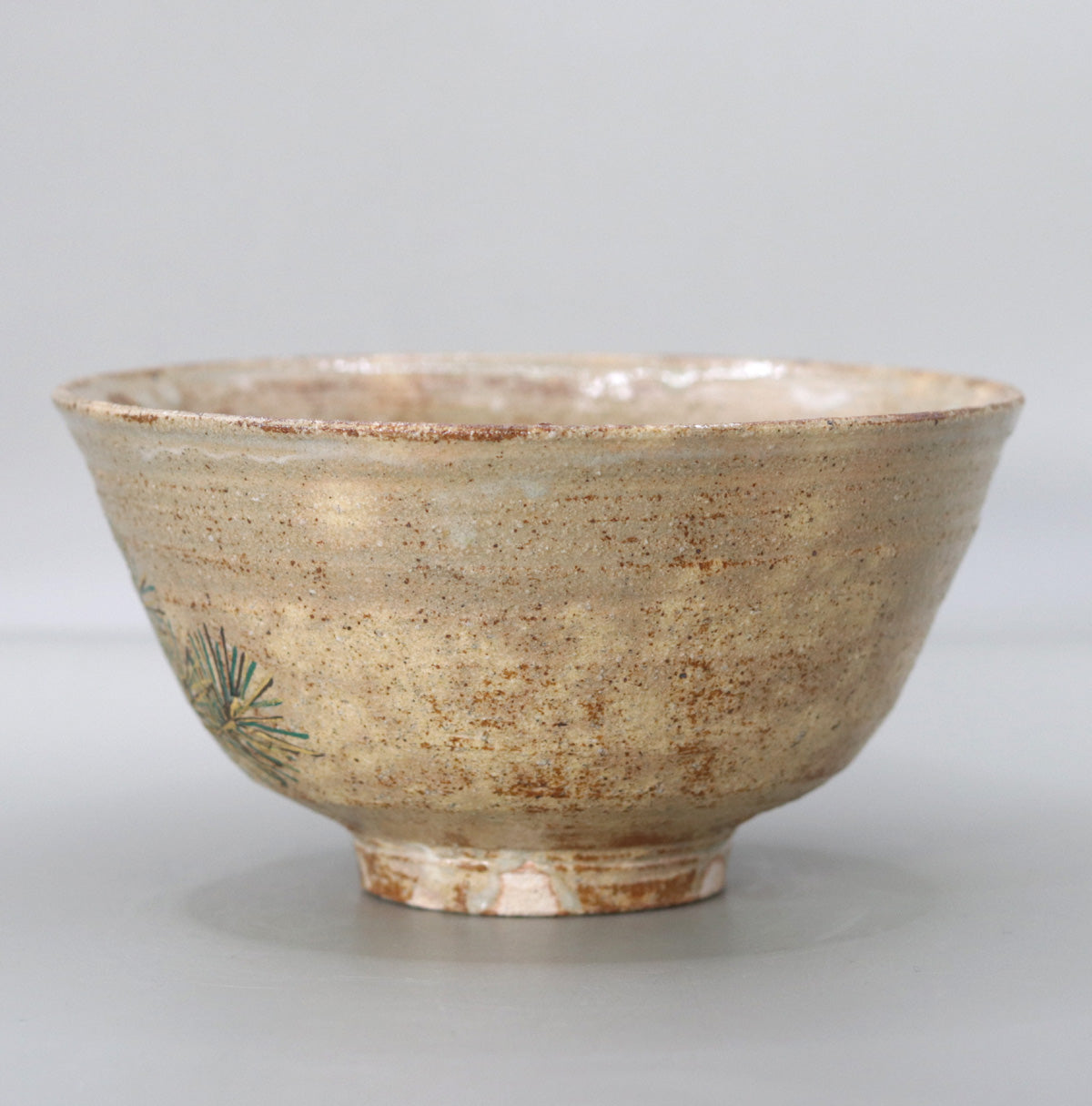


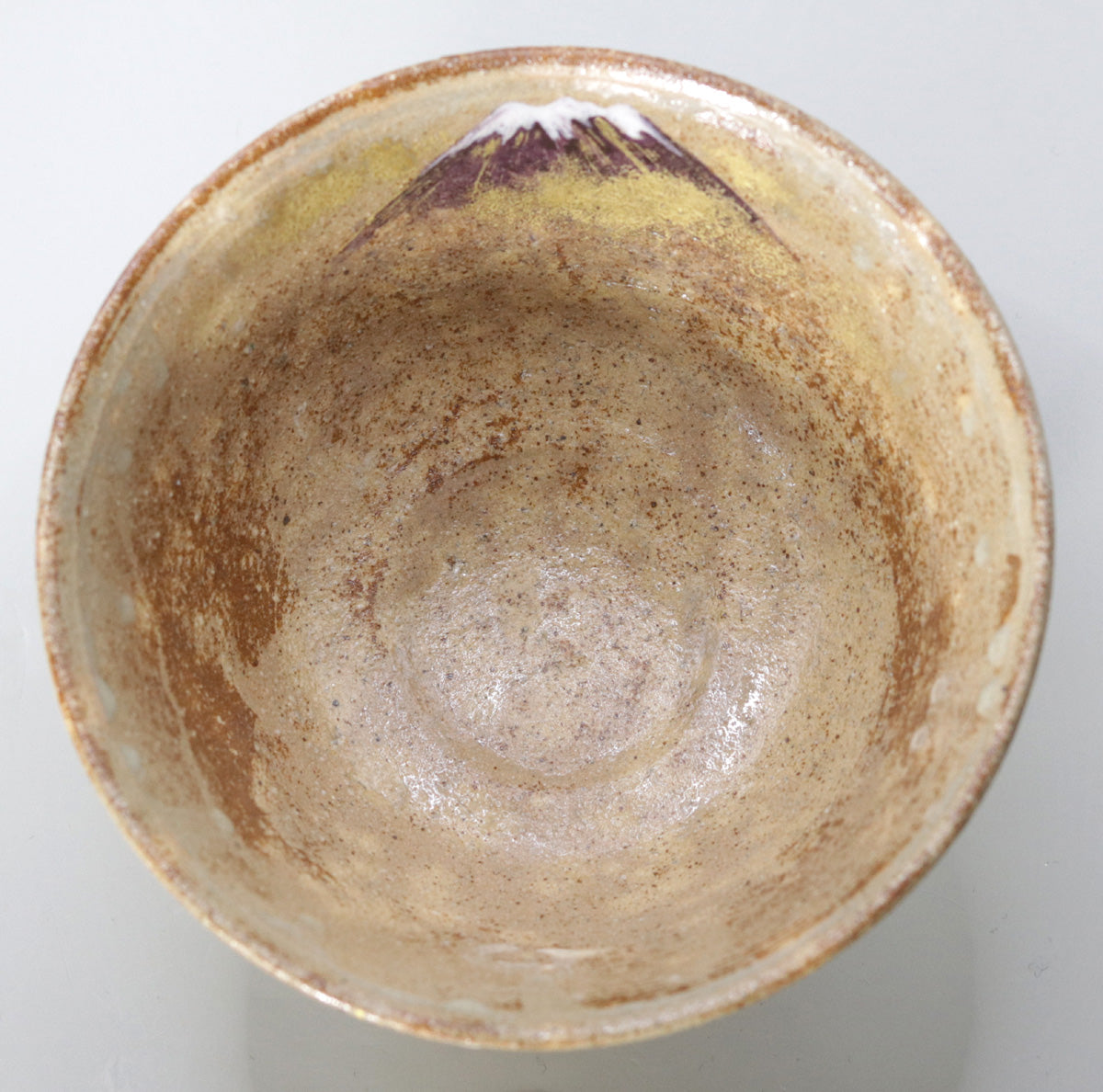
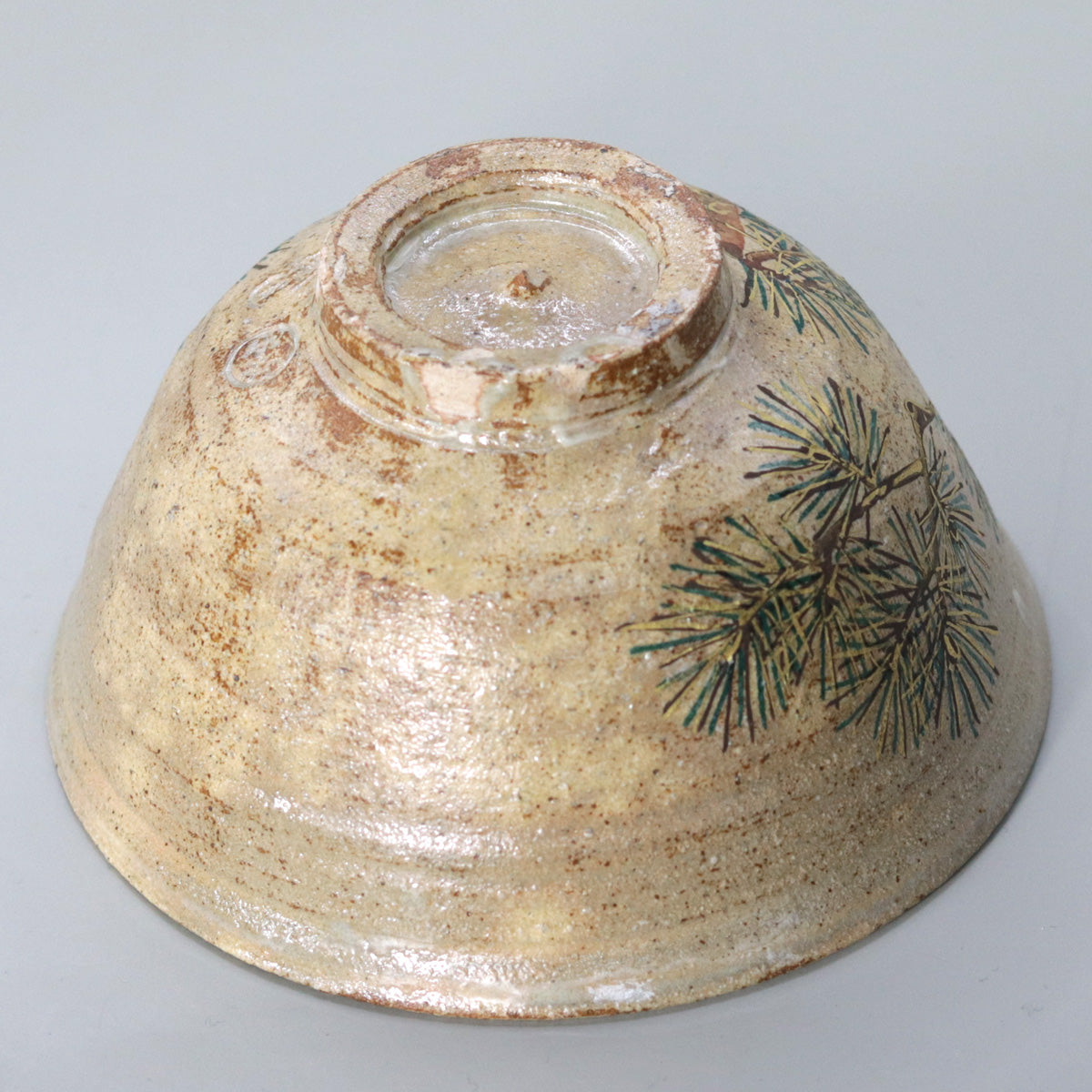
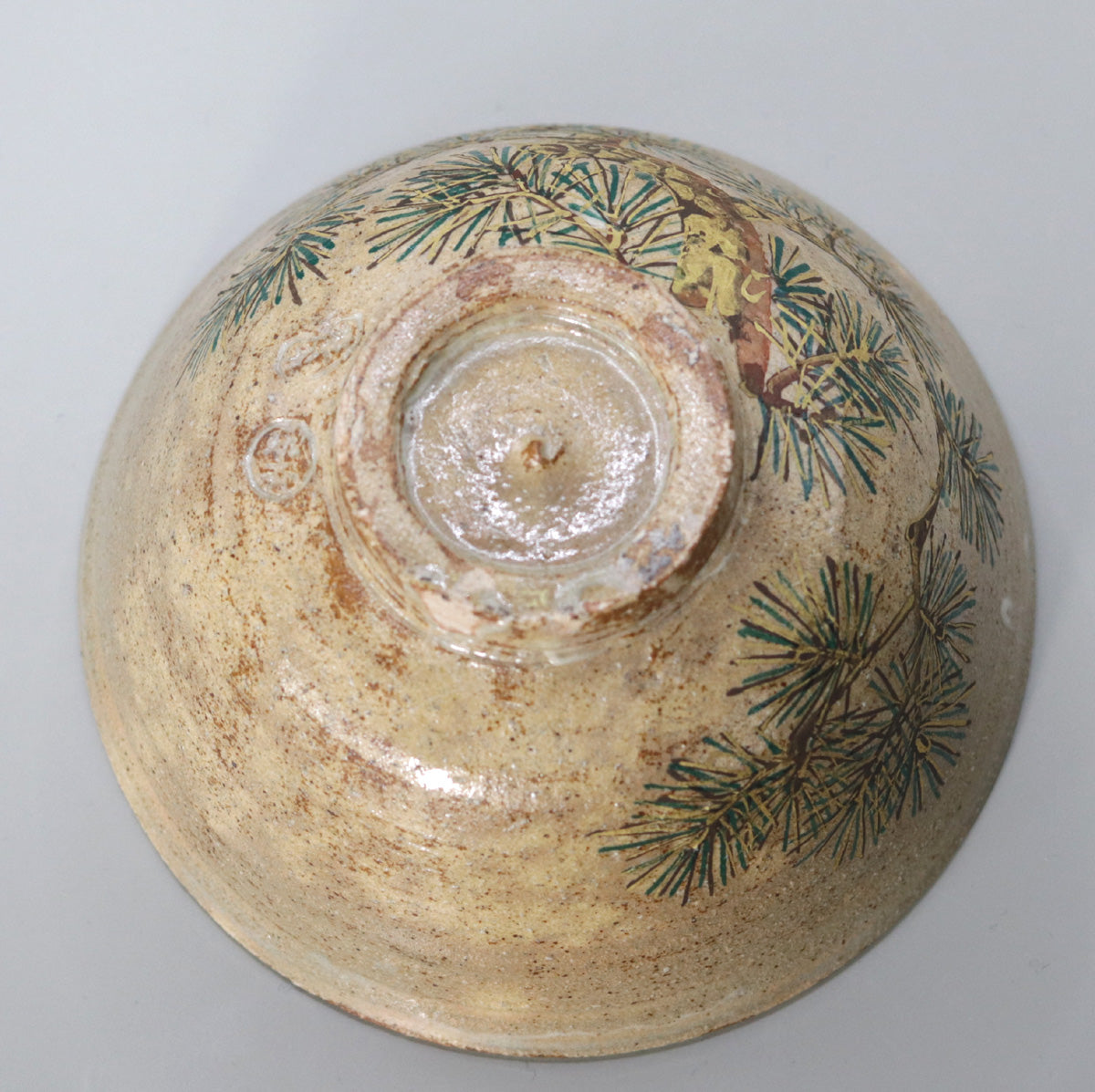
Multi-Column
-
[I will send it to you quickly and carefully]
We carefully package each product in a way that suits it best.
Also, delivery times vary depending on the piece (vessel, etc.).
Items that already come with a box will be shipped within 1-3 days of the order date.
For items that require a box to be made after your order, it will take approximately 30 days for production to be completed and then shipped.
In either case, once we have confirmed your order, we will contact you by email to inform you of the delivery date.
-
[Requests when purchasing pottery]
Even products that look the same may differ slightly in color, shape, size, etc.
The way the glaze is used, the power of the kiln, the firing method, the season, and the humidity also affect the appearance of the pottery.
Please understand the individuality of each piece of pottery and enjoy the unique warmth of handmade.

